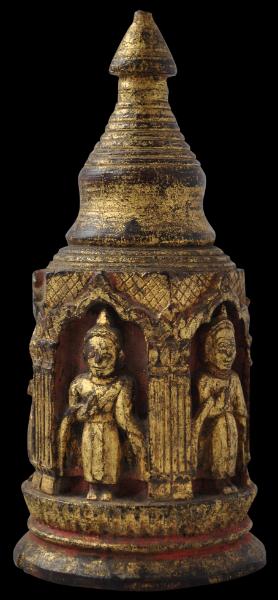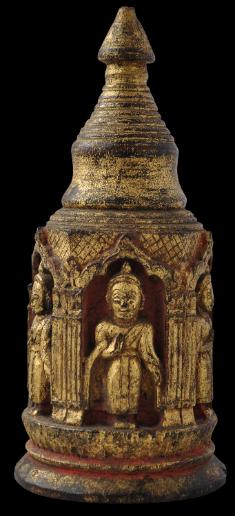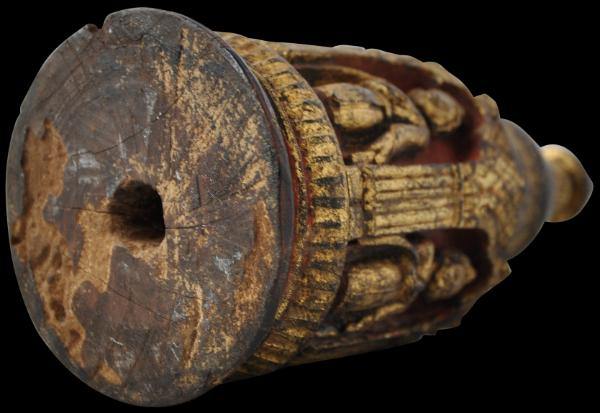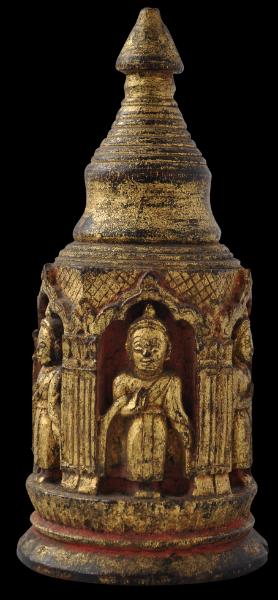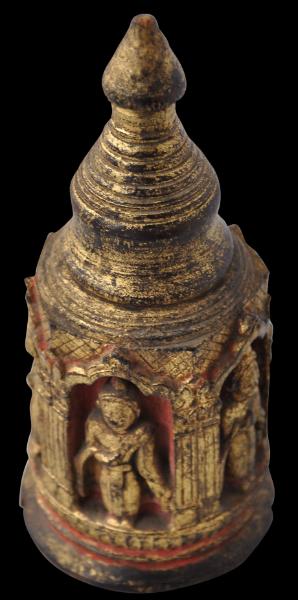
Arakan Burmese Gilded Buddhist Reliquery
Gilded & Lacquered Wooden Reliquary in Stupa Form
Arakan, West Burma
18th century
height: 19cm, diameter: 8.5cm
The main body of this votive stupa model comprises five niches each with a standing Buddha with the left arm towards his side and the right arm raised half way with the palm of his hand held upward, dispelling evil and preventing conflict.
The top of the stupa has an elongated lotus bud finial (with a minor loss to the top) above a series of concentric circles in diminishing sizes.
The stupa has a red lacquer covering over which gilding has been applied.
A bronze relic casket of related form attributed to the 16-17th century and photographed at the Phara-baw Monastery at Mrauk-U is illustrated in Gutman (2001, p. 161). This wooden votive stupa appears to be a copy of this casket. Indeed, it seems that this stupa is in fact a relic casket as well – a hole approximately 1.5 cm in diameter has been drilled up into the base of the stupa in which a relic would have been stored.
Mrauk-U was the capital of the Arakan kingdom. The kingdom was ruled by the Arakanese king Min-Bin and his son Min-hpa-laung (1571-93). They embarked on a lavish round of temple construction in their capital. Models of stupas were placed in shrines during consecration ceremonies. Gutman comments that such models are likely to be architecturally analogous to the shrines in which they were placed and so can be accorded datings similar to shrines of similar form. It is possible that this stupa served such a purpose.
References:
Gutman, P., Burma’s Lost Kingdoms: Splendours of Arakan, Weatherhill, 2001.
Provenance
UK art market
Inventory no.: 1230
SOLD

